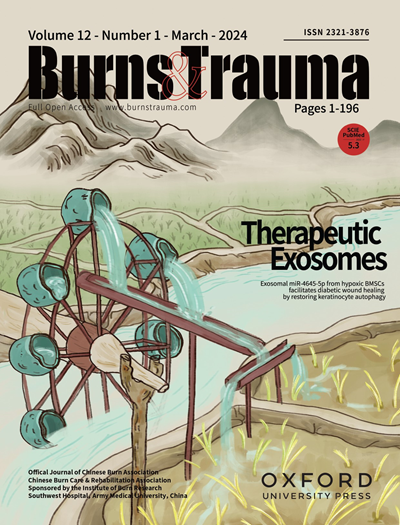Patient-reported outcomes and prognostic factors in ankle fracture-dislocation: A systematic review
IF 6.3
1区 医学
Q1 DERMATOLOGY
引用次数: 0
Abstract
Ankle fractures have an incidence of around 90,000 per year in the United Kingdom. They affect younger patients following high energy trauma and, in the elderly, following low energy falls. Younger patients with pre-existing comorbidities including raised BMI or poor bone quality are also at risk of these injuries which impact the bony architecture of the joint and the soft tissues leading to a highly unstable fracture pattern, resulting in dislocation. At present, there is no literature exploring what effect ankle fracture-dislocations have on patients’ quality of life and activities of daily living, with only ankle fractures being explored. Relevant question formatting was utilised to generate a focused search. This was limited to studies specifically mentioning ankle injuries with a focus on ankle fracture-dislocations. The number of patients, fracture-dislocation type, length of follow up, prognostic factors, complications and outcome measures were recorded. Nine hundred and thirty-nine fractures were included within the studies. Eight studies looked at previously validated foot and ankle scores, two primarily focused on the American Orthopaedic Foot and Ankle Society score (AOFAS), three on the foot and ankle outcome score (FAOS), and one study on the Olerud–Molander score (OMAS). Patient, injury, and management factors were identified as being associated with poorer clinical outcomes. Not only are age and BMI a risk factor for posttraumatic osteoarthritis but they were also identified as prognostic indicators for functional outcome in this review. Patients sustaining a concurrent fracture-dislocation were found to have poorer clinical outcomes, and the timing and success of reduction further influenced outcomes. This review found that the quality of reduction was directly related to the patients’ functional outcomes post-follow up, and the risk of developing posttraumatic osteoarthritis, which was more frequent in patients sustaining Bosworth fractures, posterior malleolar fractures, and in patients with increasing age. IV.患者报告的踝关节骨折脱位的结局和预后因素:一项系统综述
在英国,踝关节骨折的发生率每年约为9万例。他们影响年轻患者在高能量创伤和老年人,在低能量跌倒。患有BMI升高或骨质质量差等既往合并症的年轻患者也面临这些损伤的风险,这些损伤会影响关节的骨结构和软组织,导致高度不稳定的骨折模式,从而导致脱位。目前尚无文献探讨踝关节骨折脱位对患者生活质量及日常生活活动的影响,仅有踝关节骨折的研究。相关的问题格式被用来产生一个集中的搜索。这仅限于专门提到踝关节损伤的研究,重点是踝关节骨折脱位。记录患者人数、骨折脱位类型、随访时间、预后因素、并发症及预后指标。研究中包括了939例骨折。8项研究着眼于先前验证的足部和踝关节评分,2项主要关注美国骨科足部和踝关节协会评分(AOFAS), 3项研究关注足部和踝关节结局评分(FAOS), 1项研究关注Olerud-Molander评分(OMAS)。患者、损伤和管理因素被确定为与较差的临床结果相关。年龄和BMI不仅是创伤后骨关节炎的危险因素,而且在本综述中它们也被确定为功能结局的预后指标。并发骨折脱位的患者临床预后较差,复位的时机和成功进一步影响了预后。本综述发现复位质量与患者随访后的功能结局和发生创伤后骨关节炎的风险直接相关,在Bosworth骨折、后外踝骨折和年龄增长的患者中更常见。4
本文章由计算机程序翻译,如有差异,请以英文原文为准。
求助全文
约1分钟内获得全文
求助全文
来源期刊

Burns & Trauma
医学-皮肤病学
CiteScore
8.40
自引率
9.40%
发文量
186
审稿时长
6 weeks
期刊介绍:
The first open access journal in the field of burns and trauma injury in the Asia-Pacific region, Burns & Trauma publishes the latest developments in basic, clinical and translational research in the field. With a special focus on prevention, clinical treatment and basic research, the journal welcomes submissions in various aspects of biomaterials, tissue engineering, stem cells, critical care, immunobiology, skin transplantation, and the prevention and regeneration of burns and trauma injuries. With an expert Editorial Board and a team of dedicated scientific editors, the journal enjoys a large readership and is supported by Southwest Hospital, which covers authors'' article processing charges.
 求助内容:
求助内容: 应助结果提醒方式:
应助结果提醒方式:


